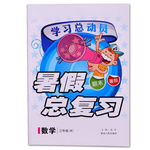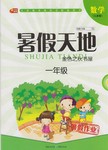题目内容
An inventor seeks to create a new product that serves a specific need and fulfills a role that other products do not. Sometimes an inventor comes up with a wholly new idea, but more often inventions are simply improvements on an older design. With a little imagination and creativity (创造力), an old idea can suddenly become something new.
However, creating a new invention means much more than having a brilliant idea. A good designer follows the design process: identifying the challenge, researching and brainstorming ideas(集思广益), designing a solution, testing and evaluating the ideas, and finally building the product. Designers also use science, math, technology, and engineering to design a tool that satisfies the need they identified.
Anyone can be an inventor —even kids! For example, Chester Greenwood was just fifteen years old when he invented a product that changed his life. In fact, his idea was so good that his invention supported him for the rest of his life. You may not know his name, but you probably know his invention —earmuffs (保暖耳罩)!
The inspiration for his earmuff design came to Chester when he was ice-skating. His ears were cold, and he decided to find a way to keep them warm. With the help of his grandmother, he made a new product to protect his ears and at the age of eighteen, Chester patented his earmuff design.
Many other famous inventors started young as well. Margaret Knight —the inventor of the flat-bottomed brown paper bag —is said to have created a safety device for textile looms(织布机) when she was just twelve years old. Another example is Thomas Edison, one of the greatest inventors in history, who applied for his first patent when he was just twenty-one years old. Over the course of his life, Thomas Edison patented a total of 1,093 inventions!
1.In most cases, an invention ________ according to the first paragraph.
A.comes from a complete new idea B.is usually based on an old product or idea
C.will change its creator’s life completely D.is created by scientists in different fields
2.The second paragraph mainly wants to tell us _______.
A.the difficulty in making a new invention B.the common steps of creating new things
C.having a good idea is the key to creation D.designing a tool is the first step in inventing
3.The example of Chester Greenwood is used to show that ________.
A.children can also invent something
B.it is easy even for children to make inventions
C.kids have more advantages in inventing things
D.to be an inventor is the best way to change one’s life
4.At first Chester designed his earmuffs in order to ________.
A.protect his ears while ice-skating
B.earn money to support his poor family
C.realize his dream of becoming an inventor
D.make himself look fashionable while ice-skating
1.B
2.B
3.A
4.A
【解析】
试题分析:本文讲述的是发明创造的话题,创造力是人人都有的,甚至连小孩子也可以有。文章中还详细介绍了人们进行创造发明的过程。
1.B 细节题。根据文章第一段后2行but more often inventions are simply improvements on an older design. With a little imagination and creativity (创造力), an old idea can suddenly become something new.可知很多发明都来自旧的想法和主意。故B正确。
2.B 段落大意题。根据本段A good designer follows the design process: identifying the challenge, researching and brainstorming ideas(集思广益), designing a solution, testing and evaluating the ideas, and finally building the product.可知讲述的是发明创造的过程。故B正确。
3.A 细节题。根据文章第三段1,2行Anyone can be an inventor —even kids! For example, Chester Greenwood was just fifteen years old when he invented a product that changed his life.可知连孩子也可以进行发明创造,接着就列举了Greenwood的例子。故A正确。
4.A 细节题。根据文章第四段1,2行 The inspiration for his earmuff design came to Chester when he was ice-skating. His ears were cold, and he decided to find a way to keep them warm可知他是想找一种保护耳朵的方法。故A正确。
考点:考察教育类短文阅读
点评:本文讲述的是发明创造的话题,创造力是人人都有的,甚至连小孩子也可以有。文章中还详细介绍了人们进行创造发明的过程。本文要求考生在阅读理解整体语篇的基础上,把握文章的真正内涵。要吃透文章的字面意思,从字里行间捕捉有用的提示和线索,这是推理的前提和基础;要对文字的表面信息进行挖掘加工,由表入里,由浅入深,从具体到抽象,从非凡到一般,通过分析、综合、判定等,进行深层处理,符合逻辑地推理。不能就是论事,断章取义,以偏概全。要忠实于原文,以文章提供的事实和线索为依据。

 学期复习一本通学习总动员期末加暑假延边人民出版社系列答案
学期复习一本通学习总动员期末加暑假延边人民出版社系列答案 芒果教辅暑假天地重庆出版社系列答案
芒果教辅暑假天地重庆出版社系列答案阅读下面短文,掌握其大意.然后从1—15各题所给的A、B、C和D项中,选出最佳选项,并在答题卡上将该项涂黑。
A land free from destruction(毁灭,破坏), plus wealth, natural resources, and labor supply —— all these were important 1 in helping England to become the center for the Industrial Revolution. 2 they were not enough. Something else was needed to start the industrial process. That "something special" was men —— 3 individuals who could invent machines, find new 4 of power, and establish business organizations to reshape society. The men who created the machines of the Industrial Revolution 5 from many backgrounds and many occupations. Many of them were 6 inventors than scientists. A man who is a pure scientist is primarily interested in doing his research 7 .He is not necessarily working 8 that his findings can be used. An inventor or one interested in applied science is all trying to make something that has a concrete use. He may try to solve a problem by 9 the theories 10 science or by experimenting through trial and error. Regardless of his method, he is working to obtain a 11 result: the construction of a harvesting machine, the burning of a light bulb(灯泡), or one of 12 other objectives. Most of the people who 13 the machines of the Industrial Revolution were inventors, not trained scientists. A few were both scientists and inventors. Even those who had little or no training in science might not have made their inventions 14 a groundwork had not been laid by scientists years 15 .
| 【小题1】 |
|
| 【小题2】 |
|
| 【小题3】 |
|
| 【小题4】 |
|
| 【小题5】 |
|
| 【小题6】 |
|
| 【小题7】 |
|
| 【小题8】 |
|
| 【小题9】 |
|
| 【小题10】 |
|
| 【小题11】 |
|
| 【小题12】 |
|
| 【小题13】 |
|
| 【小题14】 |
|
| 【小题15】 |
|
Did you ever wonder who invented products like Liquid Paper, Kevlar or paper bags? Most would think a man invented these items. Guess what? Women invented each of these. What? You don’t believe me? Well, read this:
Liquid Paper was invented by Bette Nesmith Graham in 1951 and originally called Mistake Out. Being a typist, Bette was increasingly irritated with being unable to erase her typing mistakes. The messy business left her hands black and the paper dirty. Bette was good at painting and remembered that an artist paints over mistakes. She applied that same principle to typing mistakes and Liquid Paper was born, making Bette into a self-made millionaire.
Kevlar, yes, the Kevlar of the bullet proof vest(防弹衣)—what police officers and soldiers wear, was invented by Stephanie Kwolek. Stephanie worked for the DuPont Company as a research chemist. She was asked to find a high-performance fiber. Originally, this fiber was intended to be used for car tires (轮胎). However, the fiber she developed in 1964 was amazing and is still used in products such as sailboats, skis, shoes, and yes, bullet proof vests. In 1995 Stephanie was named to the National Inventor’s Hall of Fame.
Margaret Knight invented a machine that revolutionized the making of paper bags. Paper bags had been made like envelopes but Margaret developed a machine that would fold and paste(粘)a flat-bottom paper bag, the very same type we still use today. Margaret’s family was poor and she started working at the age of nine. Her first invention at the age of twelve was a safety tool for a loom(织布机). Later she worked for the Columbia Paper Bag Company. It was there that she worked on improving the making of paper bags. She was issued her patent(专利)in 1870.
So next time you use a new product or an old one, will you wonder who made it? Do some research on the web and answer a few questions like: Who invented it? How was it invented? You may be surprised at some of the stories you uncover.
【小题1】The underlined word “irritated” in Paragraph 2 is the closest in meaning to_________.
| A.annoyed | B.excited | C.delighted | D.nervous |
| A.She was a member of the National Inventor’s Hall of Fame. |
| B.Her first invention was made when she was twenty. |
| C.Her invention was designed to produce envelopes. |
| D.She began working when she was very young. |

【小题4】What would be the best title for the passage?
| A.How inventions were made |
| B.Amazing inventions by women |
| C.Women and modern technology |
| D.You can also be an inventor |
An inventor seeks to create a new product that serves a specific need and fulfills a role that other products do not. Sometimes an inventor comes up with a wholly new idea, but more often inventions are simply improvements on an older design. With a little imagination and creativity (创造力), an old idea can suddenly become something new.
However, creating a new invention means much more than having a brilliant idea. A good designer follows the design process: identifying the challenge, researching and brainstorming ideas(集思广益), designing a solution, testing and evaluating the ideas, and finally building the product. Designers also use science, math, technology, and engineering to design a tool that satisfies the need they identified.
Anyone can be an inventor —even kids! For example, Chester Greenwood was just fifteen years old when he invented a product that changed his life. In fact, his idea was so good that his invention supported him for the rest of his life. You may not know his name, but you probably know his invention —earmuffs (保暖耳罩)!
The inspiration for his earmuff design came to Chester when he was ice-skating. His ears were cold, and he decided to find a way to keep them warm. With the help of his grandmother, he made a new product to protect his ears and at the age of eighteen, Chester patented his earmuff design.
Many other famous inventors started young as well. Margaret Knight —the inventor of the flat-bottomed brown paper bag —is said to have created a safety device for textile looms(织布机) when she was just twelve years old. Another example is Thomas Edison, one of the greatest inventors in history, who applied for his first patent when he was just twenty-one years old. Over the course of his life, Thomas Edison patented a total of 1,093 inventions!
【小题1】 In most cases, an invention ________ according to the first paragraph.
| A.comes from a complete new idea |
| B.is usually based on an old product or idea |
| C.will change its creator’s life completely |
| D.is created by scientists in different fields |
| A.the difficulty in making a new invention |
| B.the common steps of creating new things |
| C.having a good idea is the key to creation |
| D.designing a tool is the first step in inventing |
| A.children can also invent something |
| B.it is easy even for children to make inventions |
| C.kids have more advantages in inventing things |
| D.to be an inventor is the best way to change one’s life |
| A.protect his ears while ice-skating |
| B.earn money to support his poor family |
| C.realize his dream of becoming an inventor |
| D.make himself look fashionable while ice-skating |